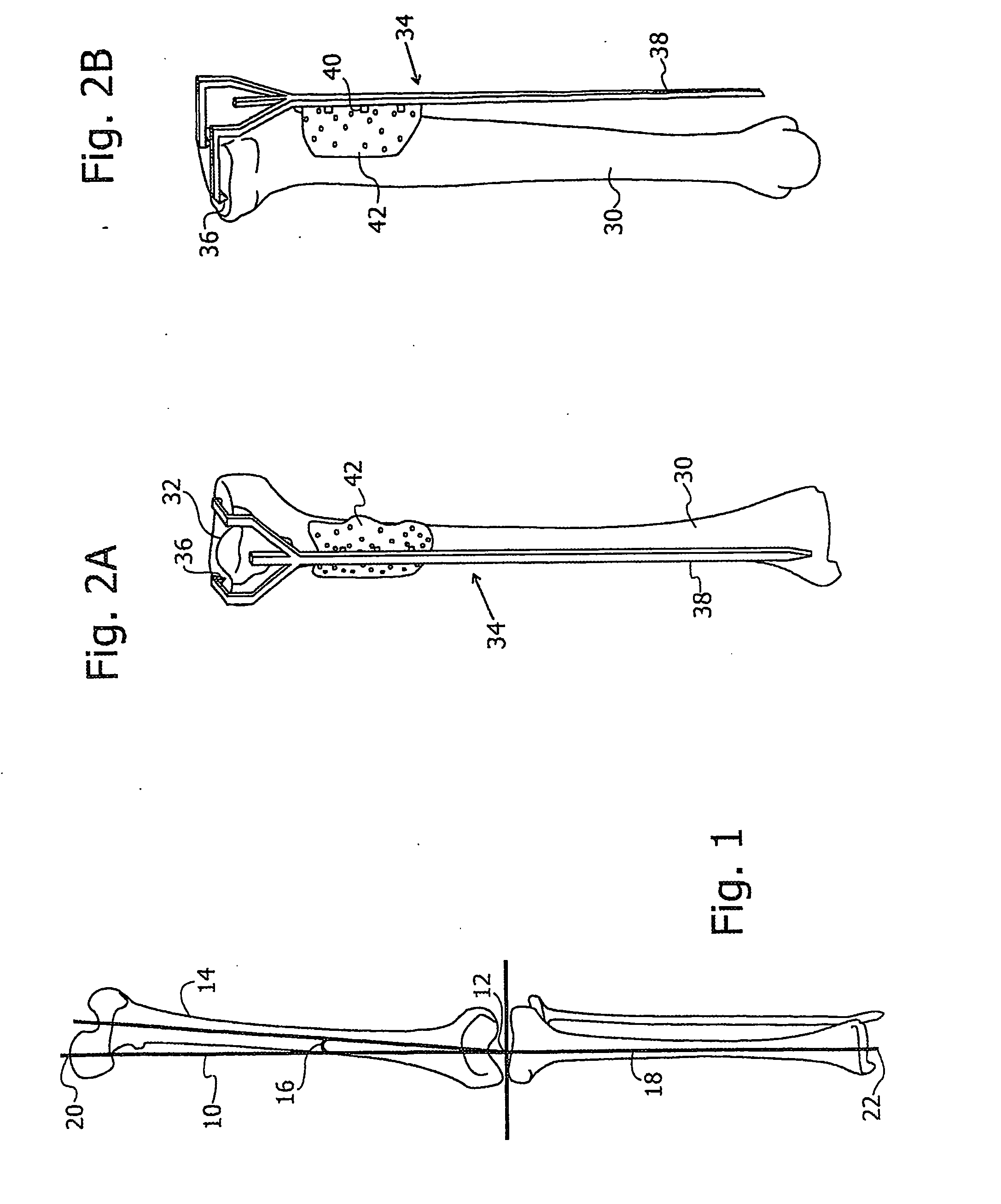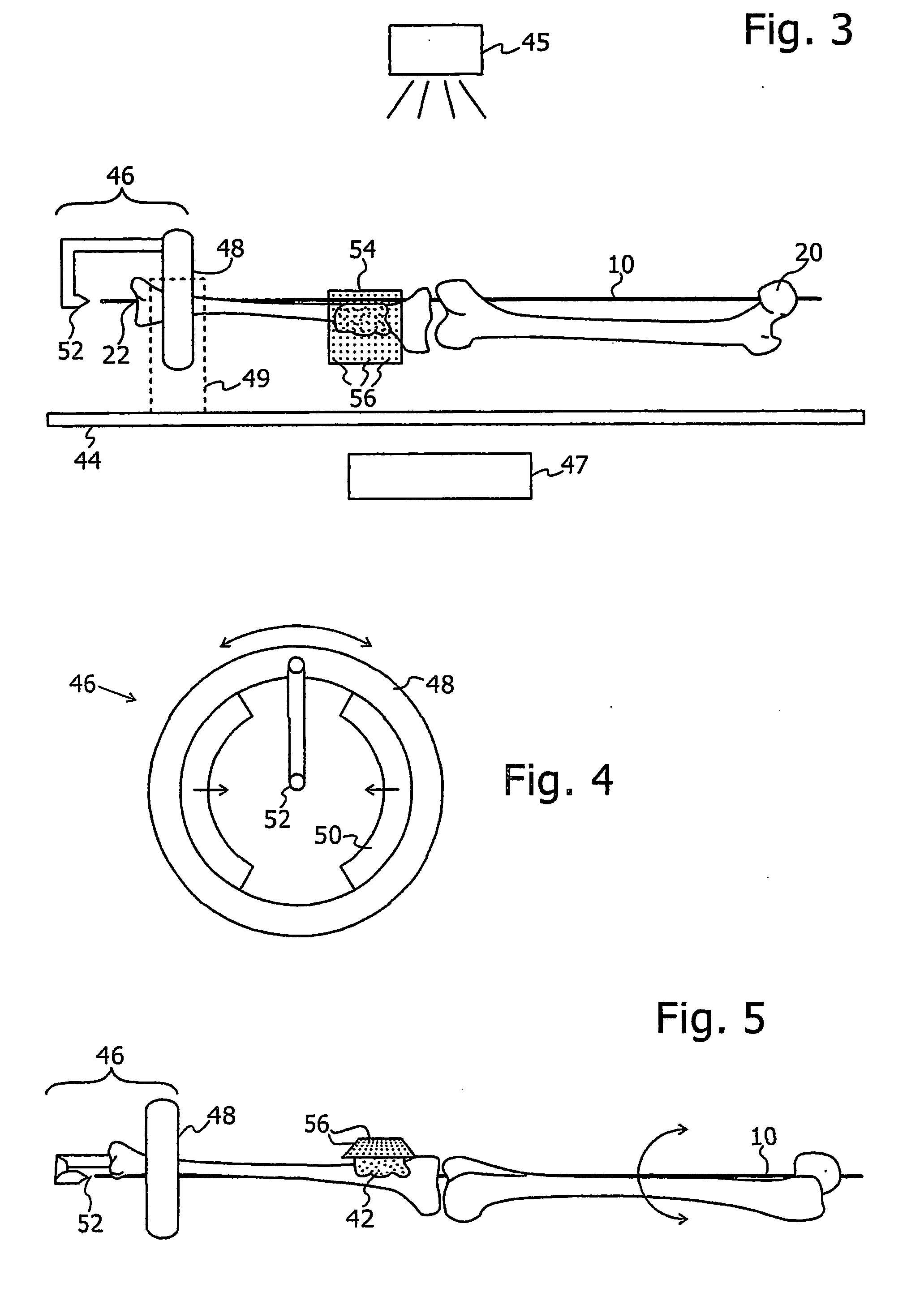Robotic total/partial knee arthroplastics
a robotic system and knee joint technology, applied in the field of robotic total/partial knee arthroplasty, can solve the problems of inaccurate estimation, premature failure of the repaired joint, and inability to perform the measurement of the mechanical axis of the leg intraoperatively, so as to relieve the onus of measurement and increase the accuracy of tkr/tka/uni
- Summary
- Abstract
- Description
- Claims
- Application Information
AI Technical Summary
Benefits of technology
Problems solved by technology
Method used
Image
Examples
Embodiment Construction
[0064] Reference is now made to FIG. 1, which illustrates schematically an anterior / posterior (A / P) view of the bones of a leg, showing the various axes of the leg components in their correct anatomical positions, as used by the system and methods of the present invention in the execution of the surgical procedures enabled thereby. The details of the parts of FIG. 1 have been described hereinabove in the Background to the Invention section of this application.
[0065] As a first step, the surgeon performs the conventional antero-lateral or antero-medial skin incision of the knee. He then makes a cut along the Retinaculum pattelae mediale in order to move aside the patella and to expose the entire structure of the knee joint, including the top end of the tibia, the bottom end of the femur, the meniscus, ligaments, etc., as is known in routine orthopedic surgical procedures on the knee. Standard surgical instruments are used to pull aside the patella together with the Retinaculum patte...
PUM
 Login to View More
Login to View More Abstract
Description
Claims
Application Information
 Login to View More
Login to View More - R&D
- Intellectual Property
- Life Sciences
- Materials
- Tech Scout
- Unparalleled Data Quality
- Higher Quality Content
- 60% Fewer Hallucinations
Browse by: Latest US Patents, China's latest patents, Technical Efficacy Thesaurus, Application Domain, Technology Topic, Popular Technical Reports.
© 2025 PatSnap. All rights reserved.Legal|Privacy policy|Modern Slavery Act Transparency Statement|Sitemap|About US| Contact US: help@patsnap.com



